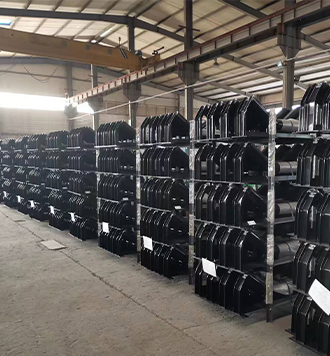 Afrikaans
Afrikaans  Albanian
Albanian  Amharic
Amharic  Arabic
Arabic  Armenian
Armenian  Azerbaijani
Azerbaijani  Basque
Basque  Belarusian
Belarusian  Bengali
Bengali  Bosnian
Bosnian  Bulgarian
Bulgarian  Catalan
Catalan  Cebuano
Cebuano  Corsican
Corsican  Croatian
Croatian  Czech
Czech  Danish
Danish  Dutch
Dutch  English
English  Esperanto
Esperanto  Estonian
Estonian  Finnish
Finnish  French
French  Frisian
Frisian  Galician
Galician  Georgian
Georgian  German
German  Greek
Greek  Gujarati
Gujarati  Haitian Creole
Haitian Creole  hausa
hausa  hawaiian
hawaiian  Hebrew
Hebrew  Hindi
Hindi  Miao
Miao  Hungarian
Hungarian  Icelandic
Icelandic  igbo
igbo  Indonesian
Indonesian  irish
irish  Italian
Italian  Japanese
Japanese  Javanese
Javanese  Kannada
Kannada  kazakh
kazakh  Khmer
Khmer  Rwandese
Rwandese  Korean
Korean  Kurdish
Kurdish  Kyrgyz
Kyrgyz  Lao
Lao  Latin
Latin  Latvian
Latvian  Lithuanian
Lithuanian  Luxembourgish
Luxembourgish  Macedonian
Macedonian  Malgashi
Malgashi  Malay
Malay  Malayalam
Malayalam  Maltese
Maltese  Maori
Maori  Marathi
Marathi  Mongolian
Mongolian  Myanmar
Myanmar  Nepali
Nepali  Norwegian
Norwegian  Norwegian
Norwegian  Occitan
Occitan  Pashto
Pashto  Persian
Persian  Polish
Polish  Portuguese
Portuguese  Punjabi
Punjabi  Romanian
Romanian  Russian
Russian  Samoan
Samoan  Scottish Gaelic
Scottish Gaelic  Serbian
Serbian  Sesotho
Sesotho  Shona
Shona  Sindhi
Sindhi  Sinhala
Sinhala  Slovak
Slovak  Slovenian
Slovenian  Somali
Somali  Spanish
Spanish  Sundanese
Sundanese  Swahili
Swahili  Swedish
Swedish  Tagalog
Tagalog  Tajik
Tajik  Tamil
Tamil  Tatar
Tatar  Telugu
Telugu  Thai
Thai  Turkish
Turkish  Turkmen
Turkmen  Ukrainian
Ukrainian  Urdu
Urdu  Uighur
Uighur  Uzbek
Uzbek  Vietnamese
Vietnamese  Welsh
Welsh  Bantu
Bantu  Yiddish
Yiddish  Yoruba
Yoruba  Zulu
Zulu Selecting the Right Drive Rollers for Optimal Conveyor Performance and Efficiency
Drive Rollers for Conveyors An Overview
Conveyor systems are fundamental in various industries, including manufacturing, warehousing, and logistics. They facilitate the efficient movement of materials and goods, significantly improving productivity and reducing manual labor. A critical component of these conveyor systems is the drive roller. In this article, we will delve into the importance of drive rollers, their types, functionalities, and the factors to consider when selecting the right drive roller for your specific application.
What Are Drive Rollers?
Drive rollers are cylindrical components located within a conveyor system. They play a pivotal role in moving the conveyor belt or the materials on the conveyor. By rotating, drive rollers propel the belt forward, allowing goods to be transported from one location to another. The efficiency of the entire conveyor system often hinges on the performance of these rollers.
Types of Drive Rollers
Various types of drive rollers are designed for different applications and conveyor configurations. Here are some common types
1. Motorized Drive Rollers These rollers have built-in motors and are often used in modular conveyor systems. They eliminate the need for external drive mechanisms, compacting the system's footprint and enhancing reliability.
2. Weighted Drive Rollers These rollers are used to help maintain tension in the conveyor belt. By adding weight, they prevent slippage and ensure that the belt stays in contact with the rollers.
3. External Drive Rollers In this configuration, the roller is powered by an external motor through chains or belts. This setup is typically found in heavier-duty applications where higher torque is required.
4. Gravity Drive Rollers Although not powered, gravity rollers facilitate the movement of products by sloping the conveyor slightly. They rely on the weight of the items to create movement, making them ideal for simple transport needs.
Functionalities of Drive Rollers
drive rollers for conveyors

The primary function of drive rollers is to provide the necessary motion for the conveyor system to operate. However, their roles extend beyond mere movement. Drive rollers help in aligning the conveyor belt and ensuring consistent tracking. They can also contribute to the stability of the materials being transported, preventing them from rolling or falling off during transit.
Moreover, drive rollers can be designed with various surface textures and materials to enhance grip and reduce slippage, which is essential when transporting items with varying weights and shapes. Some rollers may also feature special coatings to prevent wear and tear, extending their lifespan and reducing maintenance needs.
Factors to Consider When Choosing Drive Rollers
Selecting the right drive roller for your conveyor system involves several considerations
1. Load Capacity It's crucial to ensure that the drive roller can handle the weight of the materials you intend to transport. Overloading a roller can lead to premature failure and increased downtime.
2. Speed Requirements Different applications may require different speeds. Consider the required throughput of your conveyor system when selecting rollers.
3. Environmental Conditions The environment in which the conveyor operates can impact the material and design of the drive rollers. For instance, food processing environments may require stainless steel rollers to maintain hygiene.
4. Maintenance Look for rollers that are easy to maintain and replace. This consideration can save time and labor costs in the long run.
5. Cost Finally, budget considerations are always a factor. Balancing quality and cost is essential to ensure you get the best return on your investment.
Conclusion
Drive rollers are indispensable components within conveyor systems, playing a crucial role in ensuring smooth and efficient material handling. By understanding the types, functionalities, and key considerations for selecting drive rollers, businesses can optimize their conveyor systems for enhanced operational efficiency. Whether in manufacturing, warehousing, or any other sector reliant on material transport, investing in the right drive rollers can lead to significant productivity gains and cost savings.
-
Revolutionizing Conveyor Reliability with Advanced Rubber Lagging PulleysNewsJul.22,2025
-
Powering Precision and Durability with Expert Manufacturers of Conveyor ComponentsNewsJul.22,2025
-
Optimizing Conveyor Systems with Advanced Conveyor AccessoriesNewsJul.22,2025
-
Maximize Conveyor Efficiency with Quality Conveyor Idler PulleysNewsJul.22,2025
-
Future-Proof Your Conveyor System with High-Performance Polyurethane RollerNewsJul.22,2025
-
Driving Efficiency Forward with Quality Idlers and RollersNewsJul.22,2025





























